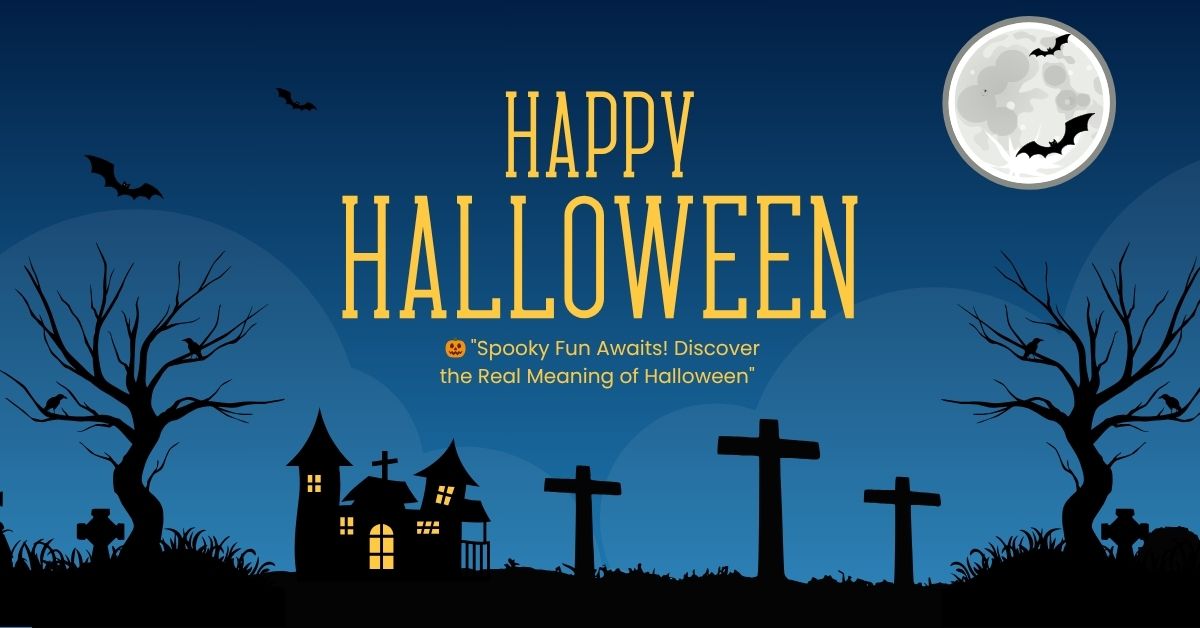🎃 What Is Halloween Really About? Unmasking the Truth Behind the Celebration
Halloween is one of the most popular festivals in the Western world, especially in the United States. Every year, millions dress up in costumes, decorate their homes with pumpkins and skeletons, and enjoy candies and haunted attractions. But beyond the fun and spookiness, many people ask: What is Halloween really about? Is it just about costumes and candy? Or is there a deeper, perhaps darker, history behind it?
🎃 What Is Halloween All About?
At its core, Halloween is a mix of ancient pagan rituals, Christian influences, and modern pop culture. The word “Halloween” comes from “All Hallows’ Eve” — the evening before All Saints’ Day (November 1), a day that honors Christian saints and martyrs. However, long before the Christian influence, the Celtic people in ancient Ireland and Scotland celebrated Samhain (pronounced ‘sow-in’), a festival marking the end of the harvest season and the start of winter. They believed that on this night, the veil between the living and the dead was thin — allowing spirits to cross into the human world. People would light bonfires, wear disguises to ward off ghosts, and perform rituals for protection. Over time, as Christianity spread across Europe, the Church blended pagan customs with Christian traditions — giving birth to what we now call Halloween.
🎃 What Is Halloween Really About in Christian Belief?
From a Christian perspective, Halloween can be viewed in two different ways. Some Christian denominations see it as a way to honor the saints and remember the dead — particularly during All Saints’ Day and All Souls’ Day (November 2). However, other Christians are cautious, considering Halloween’s pagan roots and its association with spirits, witchcraft, and darkness as something that contradicts Christian values.
That’s why many churches either avoid Halloween or offer alternative celebrations like “Harvest Festivals” or “Trunk-or-Treat” events, focusing on fun without the spooky or supernatural elements.
🎃 Why Is Halloween Celebrated?
Halloween is celebrated as a way to enjoy community, creativity, and seasonal fun. While its roots may be spiritual and superstitious, today it is mostly about costumes, candy, haunted houses, jack-o’-lanterns, and fun with friends and family. Children go trick-or-treating, people host costume parties, and neighborhoods compete in spooky decorations.
Yet, for many, Halloween still holds symbolic meaning. It’s a time to confront fear, reflect on mortality, and celebrate the mystery of the unknown.
🎃 When Was Halloween First Celebrated in the United States?
Halloween was not widely celebrated in early America, especially in New England, where Puritans avoided anything associated with paganism. However, as Irish immigrants arrived in large numbers during the mid-19th century, they brought Halloween traditions with them. By the early 1900s, Halloween became more mainstream — especially among children.
By the 1920s and 1930s, Halloween had become a community-centered holiday in the U.S., focusing on parades and festive gatherings. Trick-or-treating became popular around the 1940s, turning Halloween into the child-friendly holiday we know today.
🎃 Why Is Halloween Celebrated on October 31st?
The date October 31st aligns with the ancient Celtic festival of Samhain. It marked the end of summer and the beginning of a long, dark winter. Celts believed that October 31 was a night when the boundary between the living and the dead blurred — making it the most spiritual and mysterious night of the year.
Later, when the Catholic Church created All Saints’ Day (November 1) to honor saints, the night before — All Hallows’ Eve (October 31) — naturally became a sacred and symbolic evening. The merging of Christian observance and ancient folklore gave Halloween its timing and spiritual significance.
🎃 Halloween’s Dark History
While modern Halloween is all about fun and fright, its dark history cannot be ignored. Ancient Samhain rituals involved lighting fires to protect against spirits, sacrificing crops or animals to the gods, and fortune-telling. Some feared malevolent spirits, witches, and supernatural creatures.
In medieval times, Halloween was also associated with fear of the dead, and people believed that ghosts, demons, and even the devil roamed freely on that night. There were times in history when Halloween was discouraged or even banned due to its perceived connection with witchcraft and the occult.
Even today, conspiracy theories and fears sometimes surface, with some believing Halloween promotes darkness. However, most people treat it as harmless fun and cultural tradition.
🎃 How Did Halloween Start in America?
Halloween started in America as a blend of Celtic folklore, Catholic tradition, and immigrant influence. The Irish and Scottish settlers in the 1800s brought their customs of Halloween, including disguises, games, and ghost stories. Over the decades, Halloween evolved into a more commercial and festive holiday — especially with the rise of candy companies, costume businesses, and Hollywood horror movies.
Today, Halloween in America is a billion-dollar industry and one of the most celebrated holidays after Christmas, with parties, pumpkin patches, haunted mazes, and trick-or-treating becoming annual traditions.
🧡 Final Thoughts
Halloween is more than just costumes and candy. It’s a festival with deep historical roots, shaped by ancient beliefs, Christian traditions, and American culture. Whether you see it as a spiritual night, a cultural event, or simply a reason to dress up and have fun, Halloween remains one of the most fascinating holidays of the year.




